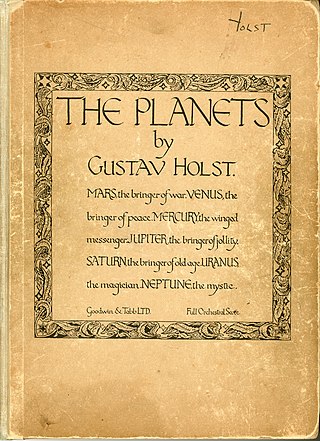
The Planets, Op. 32, is a seven-movement orchestral suite by the English composer Gustav Holst, written between 1914 and 1917. In the last movement the orchestra is joined by a wordless female chorus. Each movement of the suite is named after a planet of the Solar System and its supposed astrological character.

Sir Adrian Cedric Boult, CH was a British conductor. Brought up in a prosperous mercantile family, he followed musical studies in England and at Leipzig, Germany, with early conducting work in London for the Royal Opera House and Sergei Diaghilev's ballet company. His first prominent post was conductor of the City of Birmingham Orchestra in 1924. When the British Broadcasting Corporation appointed him director of music in 1930, he established the BBC Symphony Orchestra and became its chief conductor. The orchestra set standards of excellence that were rivalled in Britain only by the London Philharmonic Orchestra (LPO), founded two years later.
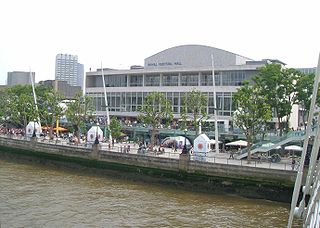
The London Philharmonic Orchestra (LPO) is a British orchestra based in London. One of five permanent symphony orchestras in London, the LPO was founded by the conductors Sir Thomas Beecham and Malcolm Sargent in 1932 as a rival to the existing London Symphony and BBC Symphony Orchestras.
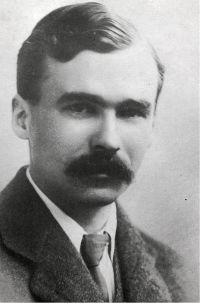
George Sainton Kaye Butterworth, MC was an English composer who was best known for the orchestral idyll The Banks of Green Willow and his song settings of A. E. Housman's poems from A Shropshire Lad. He was awarded the Military Cross for his gallantry during the fighting at Pozières in the First World War, and died in the Battle of the Somme.
Serenade to Music is an orchestral concert work completed in 1938 by English composer Ralph Vaughan Williams, written as a tribute to conductor Sir Henry Wood. It features an orchestra and 16 vocal soloists, with lyrics adapted from the discussion about music and the music of the spheres from Act V, Scene I from the play The Merchant of Venice by William Shakespeare. Vaughan Williams later arranged the piece into versions for chorus and orchestra and solo violin and orchestra.

Sir Edward Elgar's Symphony No. 1 in A♭ major, Op. 55 is one of his two completed symphonies. The first performance was given by the Hallé Orchestra conducted by Hans Richter in Manchester, England, on 3 December 1908. It was widely known that Elgar had been planning a symphony for more than ten years, and the announcement that he had finally completed it aroused enormous interest. The critical reception was enthusiastic, and the public response unprecedented. The symphony achieved what The Musical Times described as "immediate and phenomenal success", with a hundred performances in Britain, continental Europe and America within just over a year of its première.

The Symphony No. 2 in E minor, Op. 27, is a four-movement composition for orchestra written from October 1906 to April 1907 by the Russian composer Sergei Rachmaninoff. The premiere was performed at the Mariinsky Theatre in Saint Petersburg on 26 January 1908, with the composer conducting. Its duration is approximately 60 minutes when performed uncut; cut performances can be as short as 35 minutes. The score is dedicated to Sergei Taneyev, a Russian composer, teacher, theorist, author, and pupil of Pyotr Ilyich Tchaikovsky. The piece remains one of the composer's most popular and best known compositions.

A Sea Symphony is an hour-long work for soprano, baritone, chorus and large orchestra written by Ralph Vaughan Williams between 1903 and 1909. The first and longest of his nine symphonies, it was first performed at the Leeds Festival in 1910 with the composer conducting, and its maturity belies the relatively young age – 30 – when he began sketching it. Moreover, it is one of the first symphonies in which a chorus is used throughout as an integral part of the texture and it helped set the stage for a new era of symphonic and choral music in Britain during the first half of the 20th century. It was never numbered.
Ralph Vaughan Williams dedicated his Symphony No. 4 in F minor to Arnold Bax.
Ralph Vaughan Williams composed his Symphony in E minor, published as Symphony No. 6, in 1944–47, during and immediately after World War II and revised in 1950. Dedicated to Michael Mullinar, it was first performed, in its original version, by Sir Adrian Boult and the BBC Symphony Orchestra on 21 April 1948. Within a year it had received some 100 performances, including the U.S. premiere by the Boston Symphony Orchestra under Serge Koussevitzky on 7 August 1948. Leopold Stokowski gave the first New York performances the following January with the New York Philharmonic and immediately recorded it, declaring that "this is music that will take its place with the greatest creations of the masters." However, Vaughan Williams, very nervous about this symphony, threatened several times to tear up the draft. At the same time, his programme note for the first performance took a defiantly flippant tone.
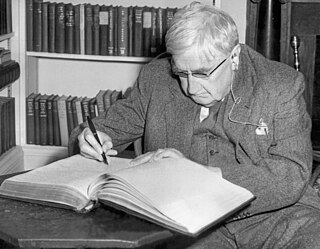
Ralph Vaughan Williams's Symphony No. 8 in D minor was composed between 1953 and 1955. Sir John Barbirolli, its dedicatee, conducted the Hallé Orchestra in the premiere at the Kings Hall in Manchester, on 2 May 1956. It is the shortest of the composer's nine symphonies, and is mostly buoyant and optimistic in tone.

The Symphony No. 9 in E minor was the last symphony written by the English composer Ralph Vaughan Williams. He composed it during 1956 and 1957, and it was given its premiere performance in London by the Royal Philharmonic Orchestra conducted by Sir Malcolm Sargent on 2 April 1958, in the composer's eighty-sixth year. The work was received respectfully but, at first, without great enthusiasm. Its reputation has subsequently grown, and the symphony has entered the repertoire, in the concert hall and on record, with the majority of recordings from the 1990s and the 21st century.
Chandos Records is a British independent classical music recording company based in Colchester. It was founded in 1979 by Brian Couzens. Since March 2024, it has been owned by Klaus Heymann.
The Symphony in E, first performed on March 10, 1866, was the only symphony composed by Arthur Sullivan. Since Sullivan's death, it has frequently been called the "Irish" Symphony as it was composed in Ireland, and as a homage to Mendelssohn's "Scottish Symphony".
The Symphony No. 3 by Arnold Bax was completed in 1929. It was dedicated to Sir Henry Wood and is perhaps the most performed and most immediately approachable of Bax's symphonies.
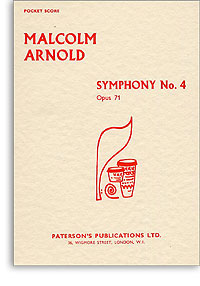
The Symphony No. 4, Op. 71 by Malcolm Arnold was finished on 13 July 1960. It is in four movements:
Edward Elgar's Third Symphony Op. 88 (posth.) was incomplete at the time of his death in 1934. Elgar left 130 pages of sketches, which the British composer Anthony Payne worked on for many years, producing a complete symphony in 1997, officially known as "Edward Elgar: the sketches for Symphony No 3 elaborated by Anthony Payne" or in brief "Elgar/Payne Symphony No 3". The first public performance was at the Royal Festival Hall, London, on 15 February 1998, by the BBC Symphony Orchestra conducted by Andrew Davis.
The Banks of Green Willow is a piece of orchestral music by British composer George Butterworth. It was composed in 1913, is written in the key of A major, and is around six minutes long.
Roderick Gregory Coleman Williams OBE is a British baritone and composer.
The Norfolk Rhapsodies are three orchestral rhapsodies by Ralph Vaughan Williams, drafted in 1905–06. They were based on folk songs Vaughan Williams had collected in the English county of Norfolk, in particular the fishing port of King's Lynn in January 1905. Only the first rhapsody survives in its entirety, having been revised by the composer in 1914. The second exists in fragmentary form, and has been completed by other hands. The third is lost.














